A recent stay in Seattle brought my wife and I to one of the most interesting gardens that I have visited for many years. The Chihuly Garden and Glass sits on a 1.5-acre plot right at the base of the Space Needle, from which you can literally view the entire garden from 520’ above, but that’s not what brought me there. Truth be told it was a white floral Chihuly glass display in the lobby of the Sheraton Grand Hotel that first caught my eye when we arrived that persuaded me that this art installation might be worth visiting.
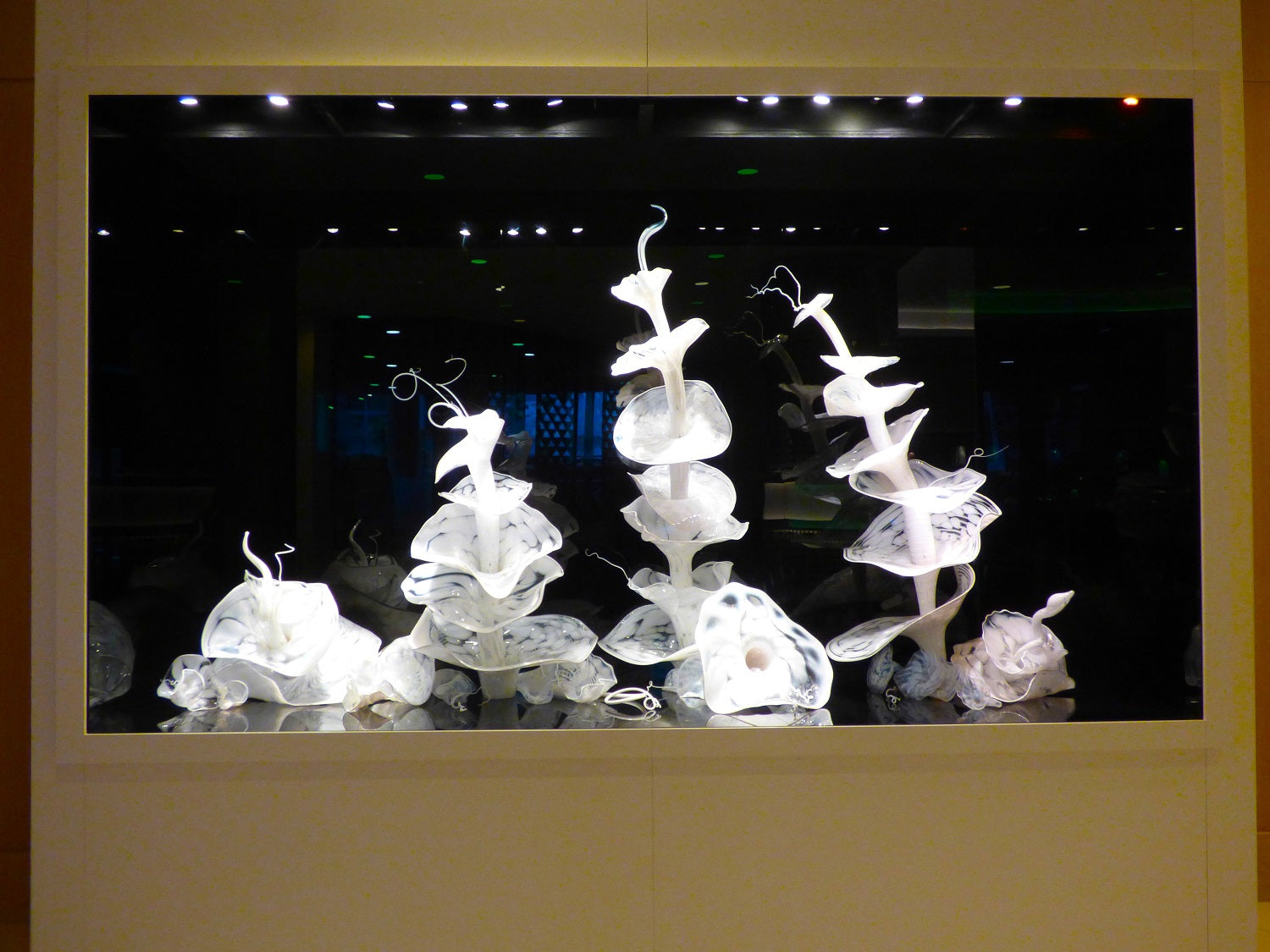
The garden opened in 2012 and is a cooperative work between architect Owen Richards and Tacoma-born glass artist Dale Chihuly, who is considered the pinnacle of his field. The entrance to the garden is through a classic tall glasshouse, a conservatory that's sole purpose is to house one of Chihuly’s largest works, a 100-foot-long floral-inspired sculpture of red, orange, yellow, and amber glass that contrasts beautifully against the blue sky and somewhat resembles a double-helix spiraling overhead. When stepping outside, one is confronted with an Alice-in-Wonderland-like compilation of glass sculptures, trees, shrubs, and perennials that flow seamlessly from one end to the other.
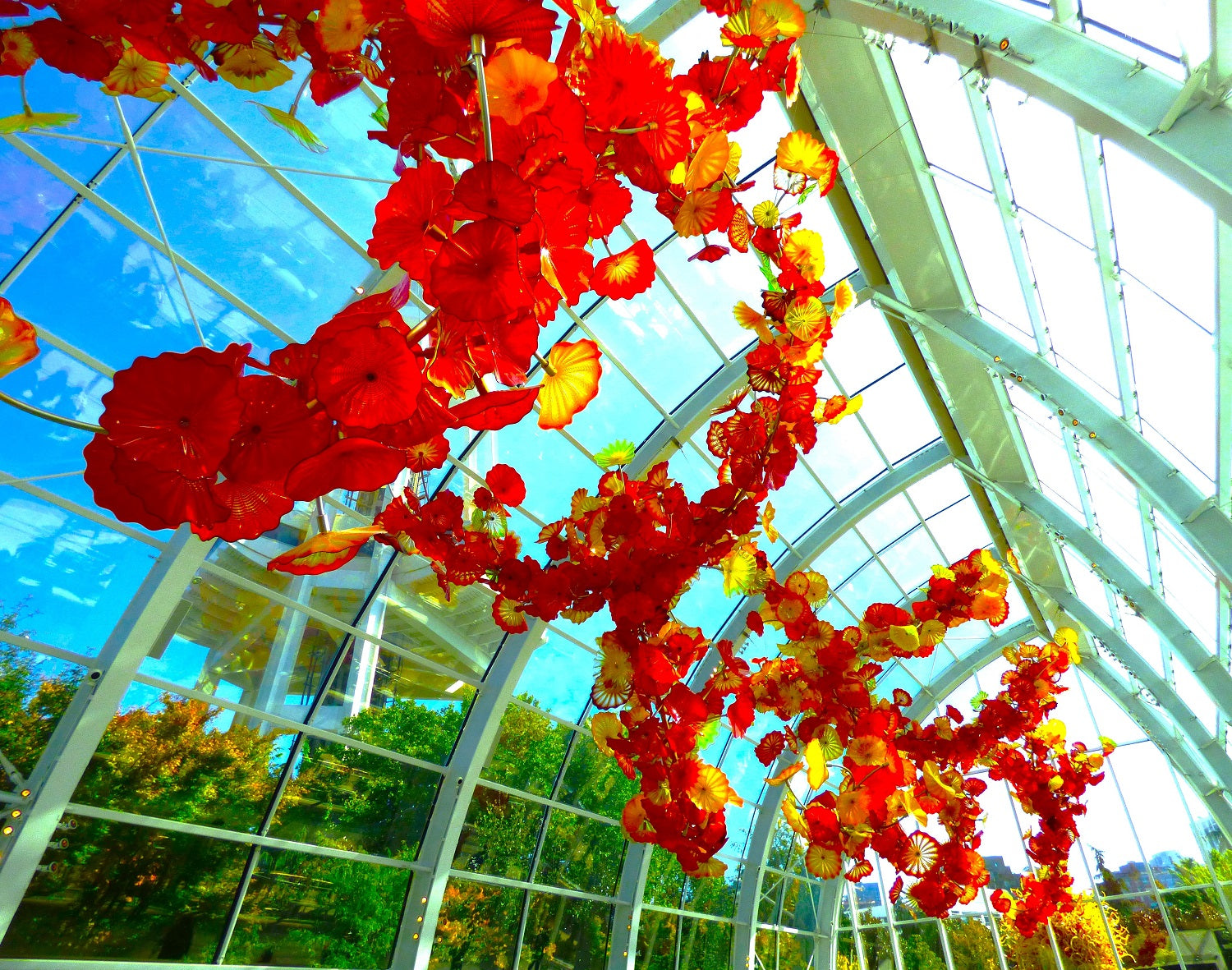
The first sculpture that catches the eye is the fiery Pacific Sun, an orb of fused yellow and red glass spirals that sits above a solid carpet of Black Mondo Grass (Ophiopogon ‘Nigrescens’) ringed by an evergreen hedge of Pittosporum ‘Wheeler’s Dwarf’.

To the right is a narrow bed book-ended with Phormium ‘Sundowner’ which features complementing orange-striped glass Fiori (somewhat resembling Herons) that accent the Salvia ‘Love and Wishes’, burgundy Euphorbia, and Osmanthus ‘Goshiki’. Anchoring the garden entrance on the left is a small display of purple glass Saguaros set against a Hydrangea serrata with fading rose-pink lacecap blooms.
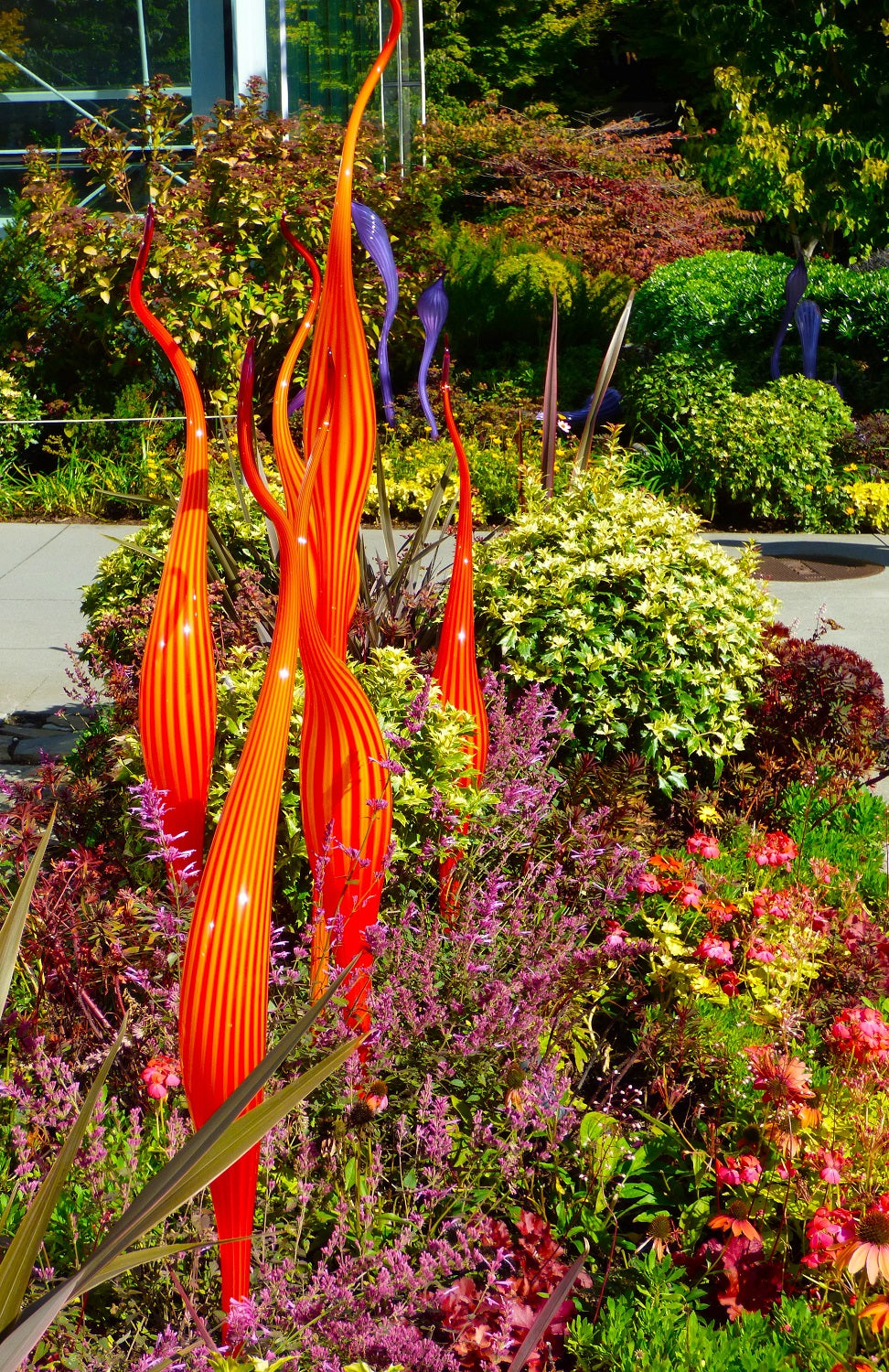
Looking straight ahead one is confronted with an open panorama of cobalt glass reeds, orbs, and Fiori dispersed under the canopy of Stewartia pseudocamellia and rising above low shrubbery of rhododendron and Lonicera pileata. The combination of piercing blue and the natural greenery basks in the changing sunlight and soothes the viewer.
As one walks through the cobalt garden and begins to turn back towards the conservatory, there is a colour transition to lime-green floral sculptures which hug the ground amidst sharply contrasting plants such as burgundy Coleus.
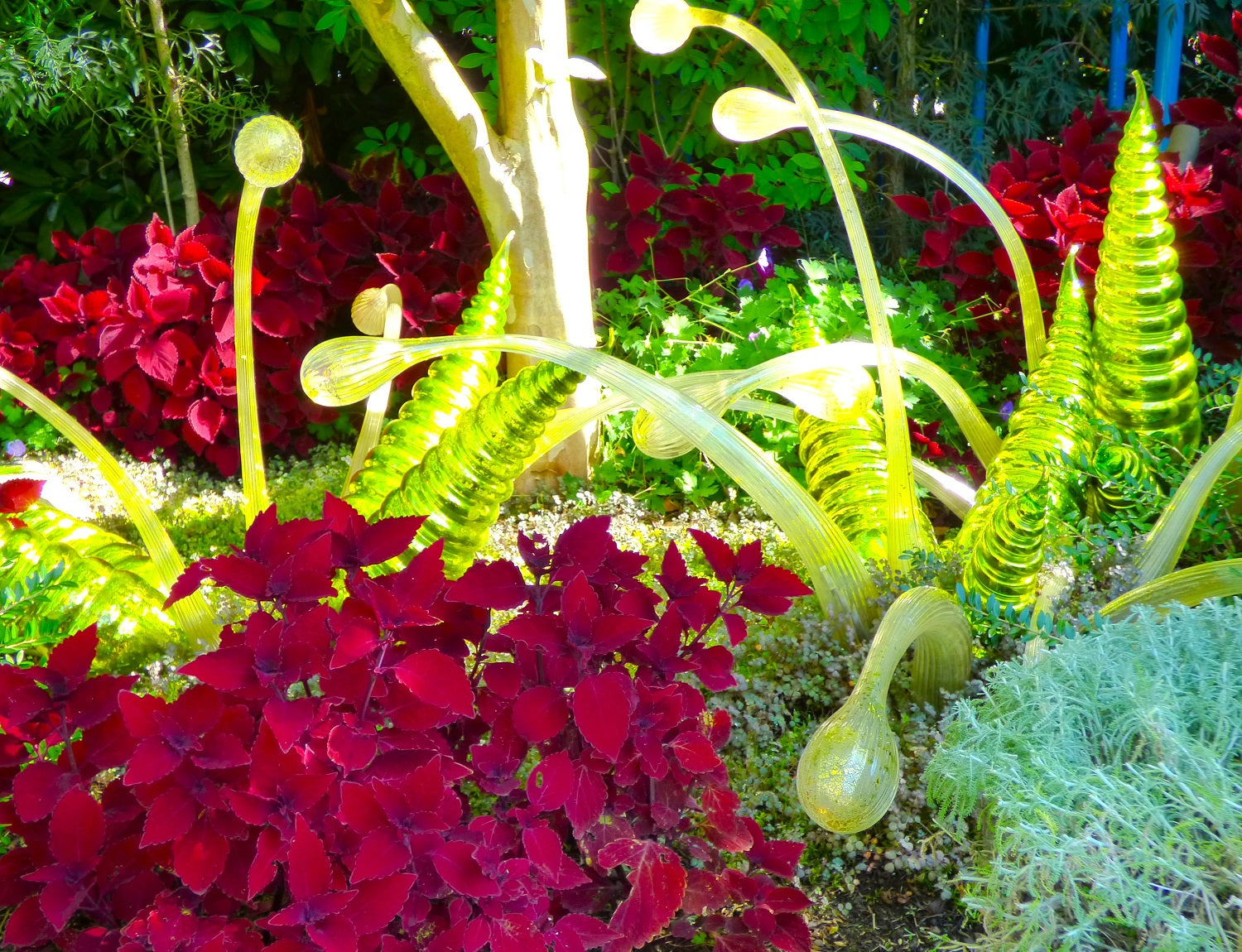
The passage to the shadier garden alongside the conservatory is prominently marked with a bold red Mexican hat glass tower that sits in solitary glory against a backdrop of rich green Hinoki Cypress, Weeping Yellow Cedar, and evergreen Magnolia (Magnolia grandiflora).

Here the garden bisects into two distinct sections, with brighter hues used on the outside edge and black being the prominent colour on the shadier conservatory boundary. On the right side it begins with a very west-coast-forest-look punctuated with pale violet reeds and a few black glass seal pups laid out to emulate the look of a meandering stream.
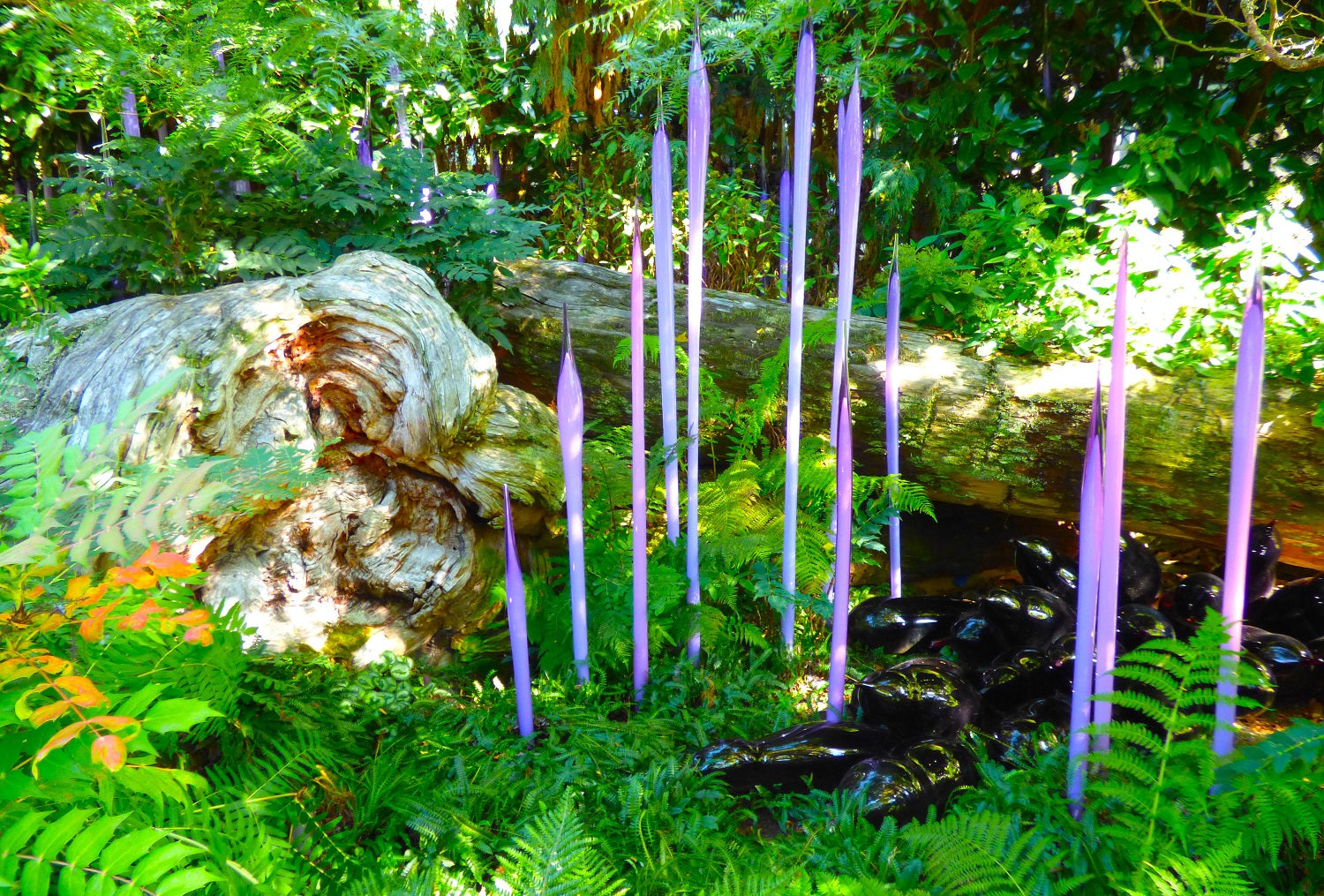
This transitions to my favourite display in the garden, a combination of bright orange glass Fiori and spheres rising out of a carpet of spreading yew (Taxus cuspidata ‘Nana’) and Leucothoe ‘Rainbow’, beautifully contrasting the peeling reddish-brown bark of the Paperbark maples (Acer griseum).
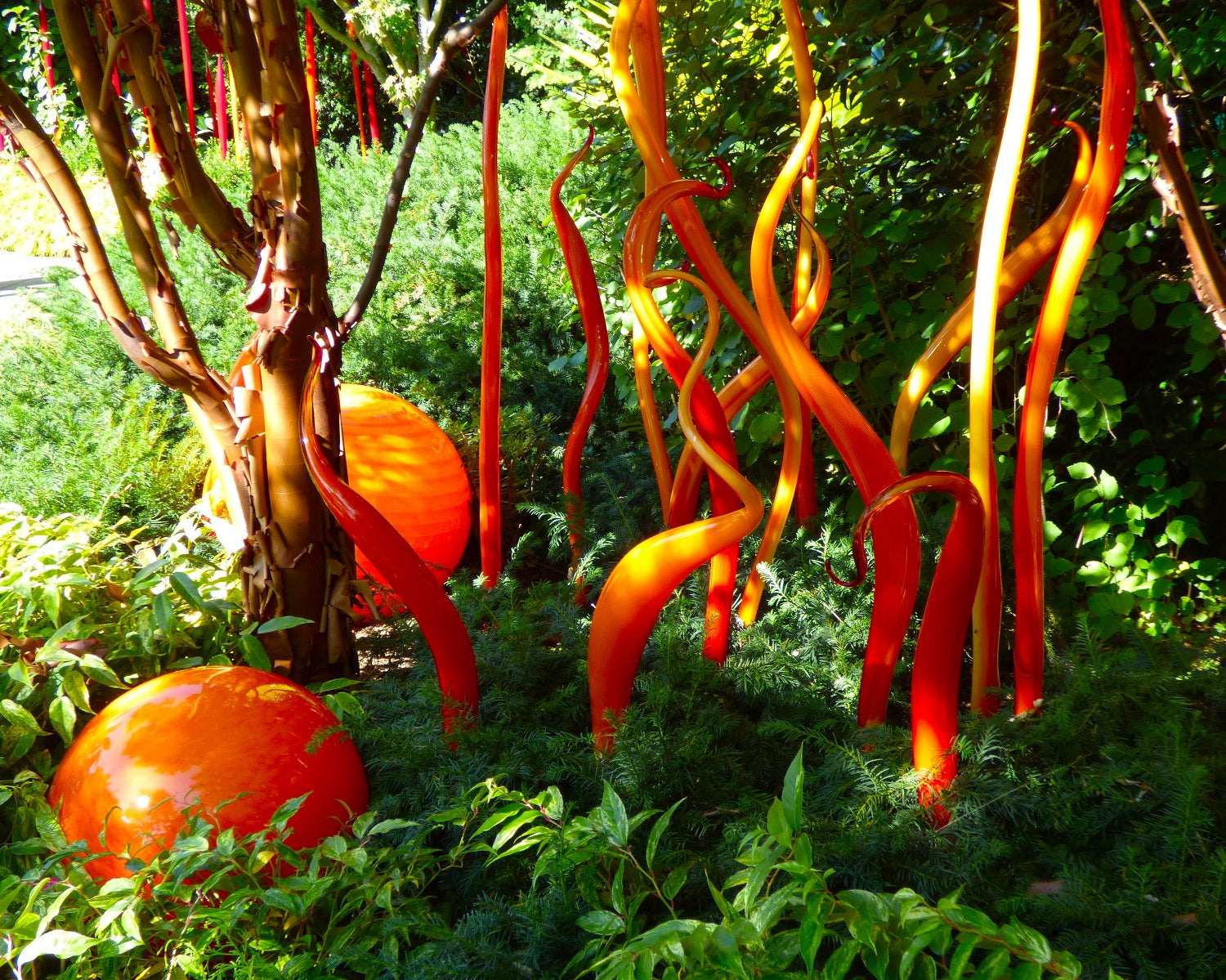
Just past this, anchoring the corner of the garden is another feature glass sculpture, an undaunted lime-green icicle tower that nicely complements the Golden Threadleaf Cypress in the foreground.
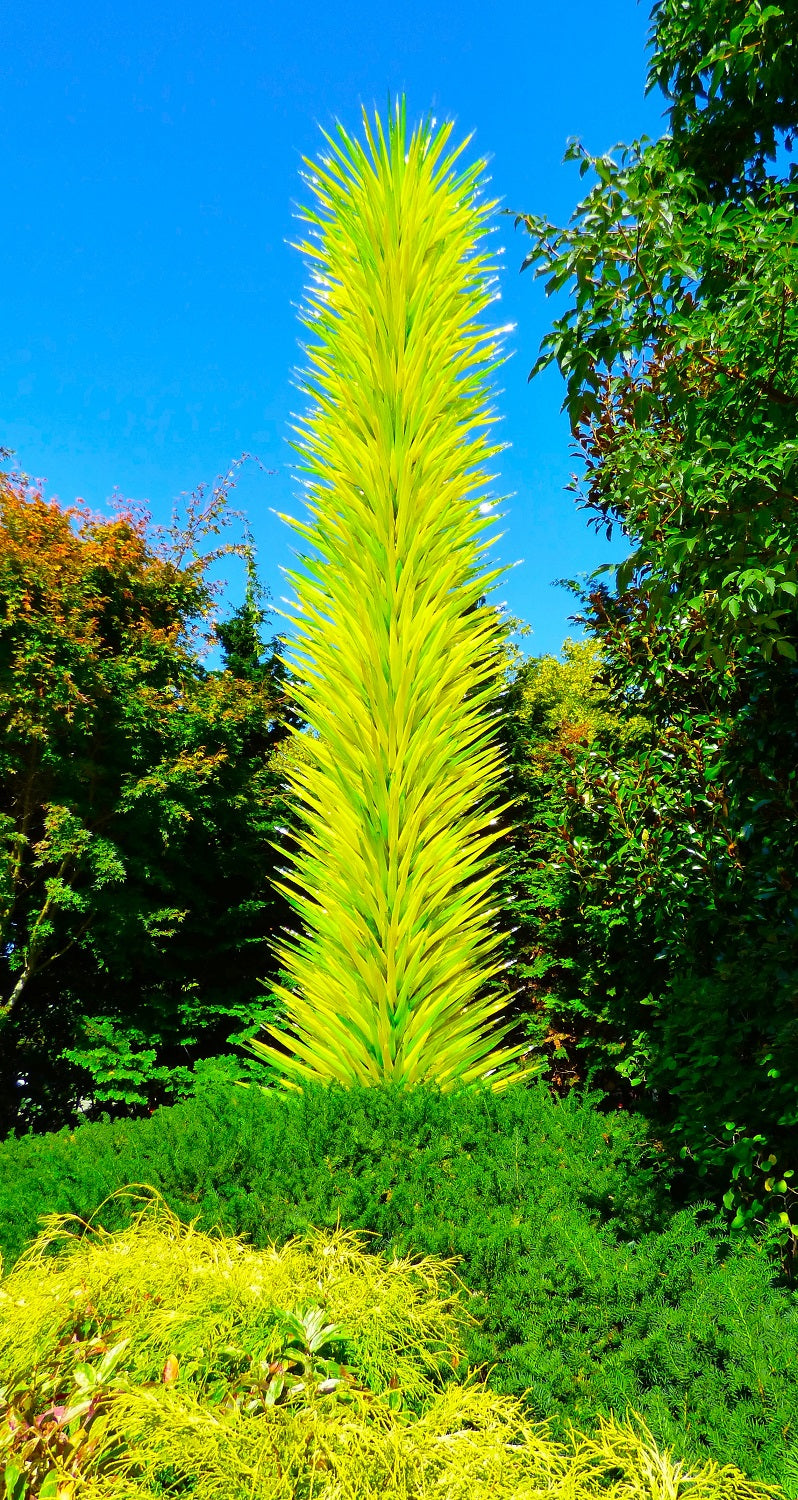
As one approaches the exit, an eye-catching display of red glass reeds brings life to the verdant display of boxwood and rhododendrons not in bloom at this time of year.
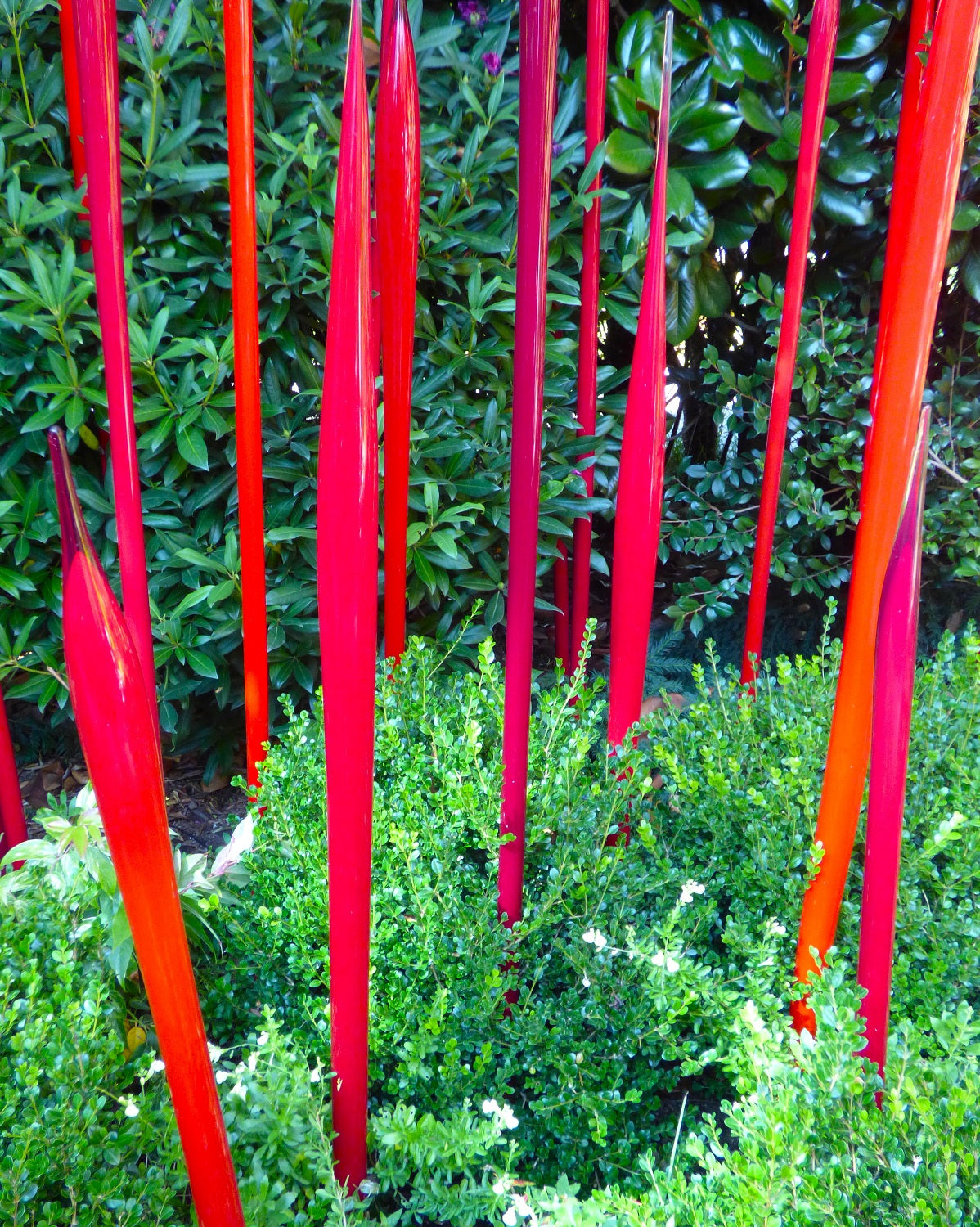
On the left-hand side of this same narrow garden is an everchanging display of black spheres, Fiori, and glass saguaros set against the marbled foliage of wild ginger (Asarum splendens), ferns, black mondo grass, Mahonia japonica, and hellebores. One would expect the black glass to dampen the display, but instead it enriches the textures of the adjacent plants.
This side of the garden ends with another prominent sculpture: a pink polyvitro tower (polyvitro being a polymer created by Chihuly) that resembles a giant stick of translucent rock candy. It is surrounded by Coral Bark maples (Acer palmatum ‘Sango Kaku’), although these have become so dense that they almost envelop it completely. I know this because we had a photo of this same display at a younger stage in our hotel suite, and the contrast of the red bark and pink tower was stunning when the trees were juvenile.

All in all, this is a garden worthy of any art-lover or horticulturist, and even though it is lit up at night, I would suggest visiting on a sunny day in order to appreciate the play of natural light against the glass sculpture and nearby plants, which is superb.


